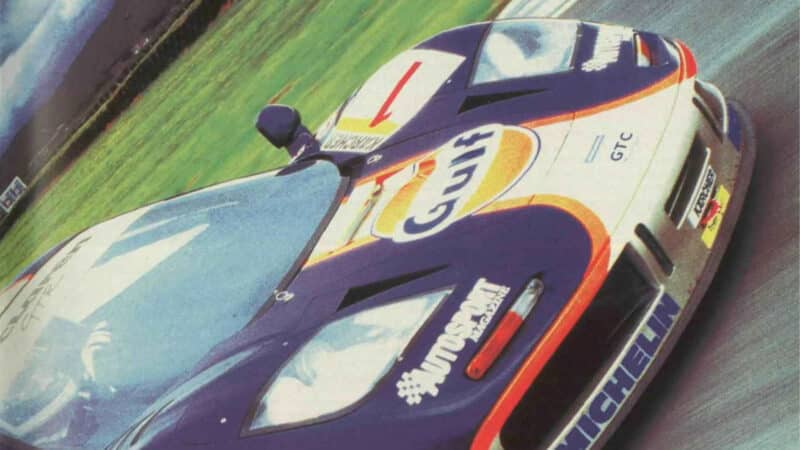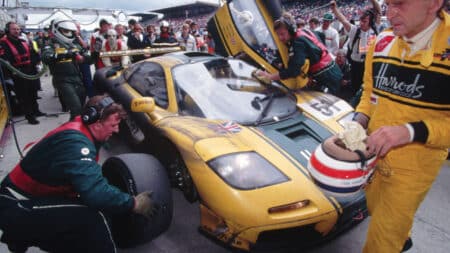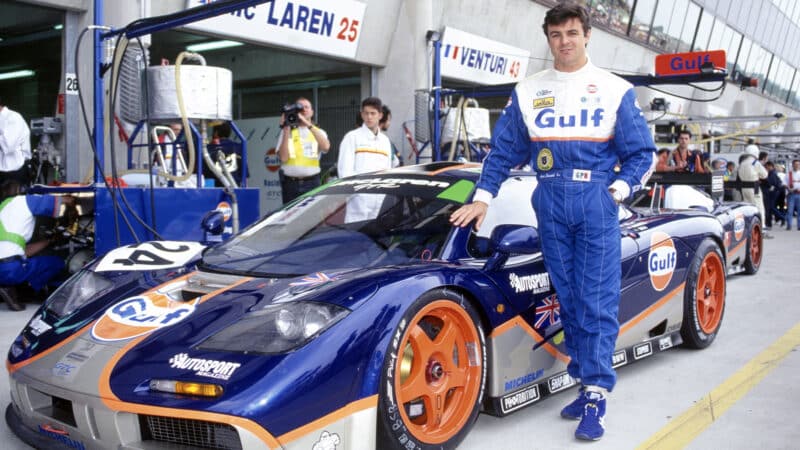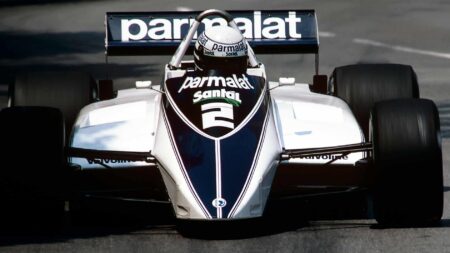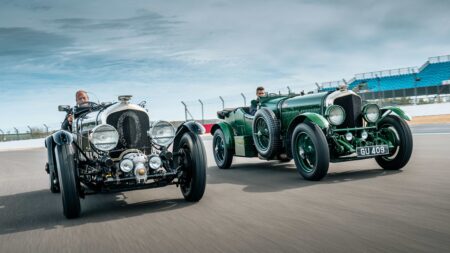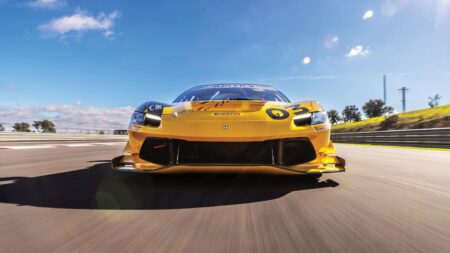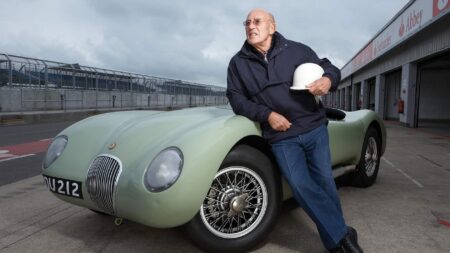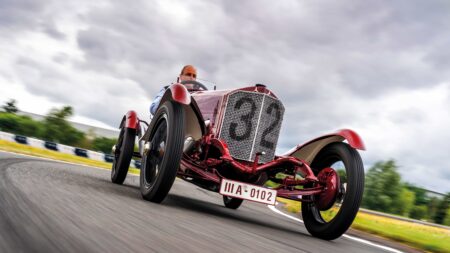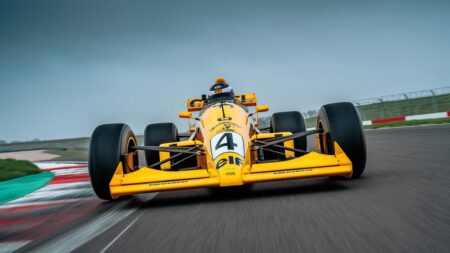You climb in through the left hand door to avoid becoming tangled with the gearlever, sited to the right of the central driving seat. It’s not exactly what you’d call dignified for more conventionally proportioned drivers than I and is not helped by the huge steel roll cage upon which the rule book insists but which has little greater effect than needlessly adding weight to the already considerably stronger carbon-fibre tub. Even so, the effort is worth it once on board, it is a brilliantly comfortable racing car.
I have its designer, Gordon Murray, to thank for that. It was Gordon who determined that any road car he designed (the F1 was his second after the Light Car Company’s extraordinary Rocket) should at least accommodate his 6ft 4in frame and, as he will tell anyone who asks, he never designed the F1 to be a racing car. The result is more headroom than you could hope for and titanium pedals which meet your feet precisely where you hope. Better, the suede rimmed steering wheel is unfashionably large and considerably easier to control as a result
Pumps and ignition on, hit the starter and bang, the BMW V12 is alive. It has 6.1-litres, variable valve timing and the best part of 500lb ft of torque. Its power output is limited by its restrictors. Murray says that, without them, an all day and all night 800bhp would be childishly easy to provide.
First gear clunks easily into place. Early GTRs had problems with their gearboxes and this one was past its best but with a gentle syncromesh (Murray designed it this way out of a concern that some private entrants might damage a straight-cut dog box during a race) and an entirely reasonable clutch, setting off is easy.

No25 rushes down the Mulsanne during Le Mans ’95
Getty Images
You would be pressed to find another racing car of similar performance that was so easy to drive slowly. Rowed along on an ocean of torque from the ever-obliging V12, gears slipping considerately into place, so long as you took care not to hoof the throttle too hard at the exit of each corner, you could drive the McLaren around the track at Ford Escort speed until the tank ran dry. There’s no shunt in the driveline and the engine will pull like a locomotive from just 2000rpm. The suspension bangs about a bit over the bumps but no more than you’d expect from a road-derived system that’s had all its rubber bushing removed but, that apart, the F1 GTR is civility itself.
The problems arrive when you try to drive it in a manner at least approaching that for which it was designed. On this cold day at this damp, unfamiliar track, it’s a job in itself just to coax enough heat into the slicks to make them work properly. You must push harder than you want on the cold rubber as, paradoxically, the danger inherent in this is the only route to the safety brought by warmed tyres. At least the steel brakes don’t seem to mind the conditions.
Your ally, through all of this, is the engine. To be honest, for all its monstrous power and electrifying throttle response, it feels like it is, a ludicrously powerful and shatteringly noisy road car engine, not a purpose-built racing unit. This is an entirely positive facet to its character. With no turbos to catch you napping with a flood of uninvited boost and a powerband that, while notably stronger above 4500rpm, will still slog from 2000-7400rpm without protest, you can be more relaxed with your gear ratios; and every time you touch the throttle, the consequent response is neither more nor less than you envisaged. Blundell’s advice, just before the door slammed, to keep the gears high and not to bother straying beyond peak power at 7000rpm, starts to make compelling sense.


